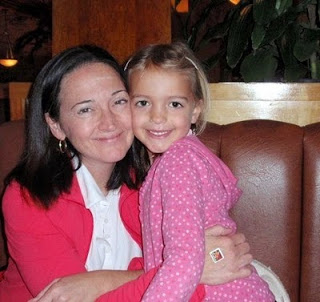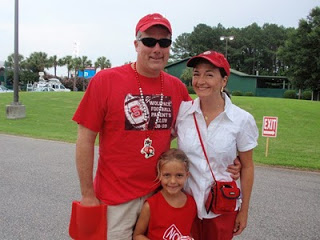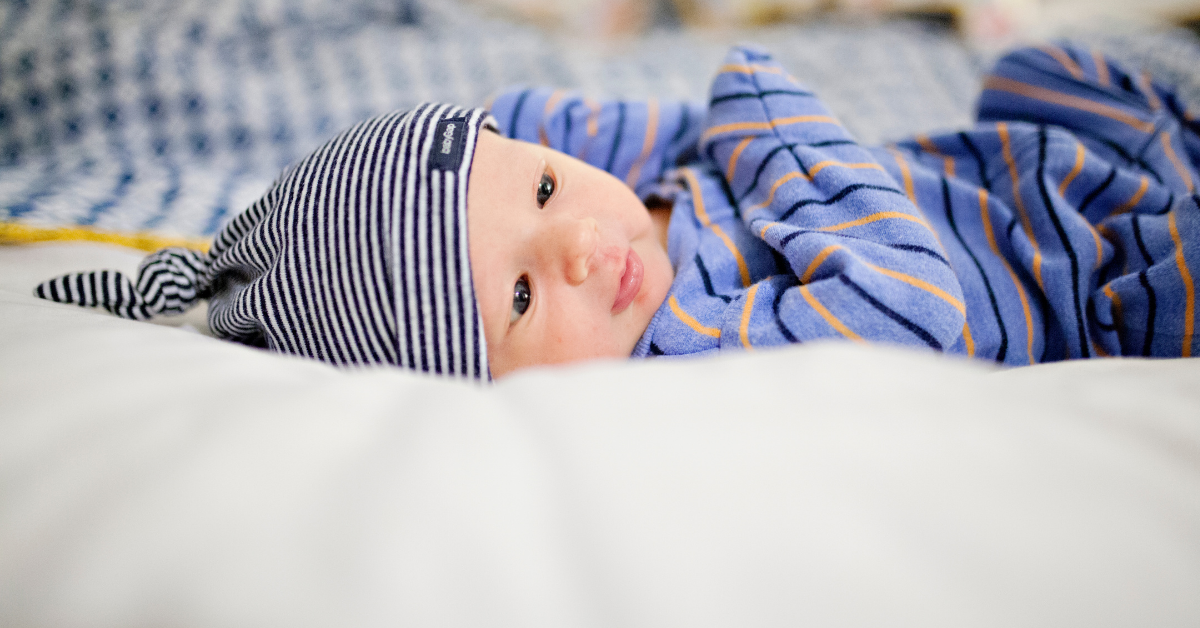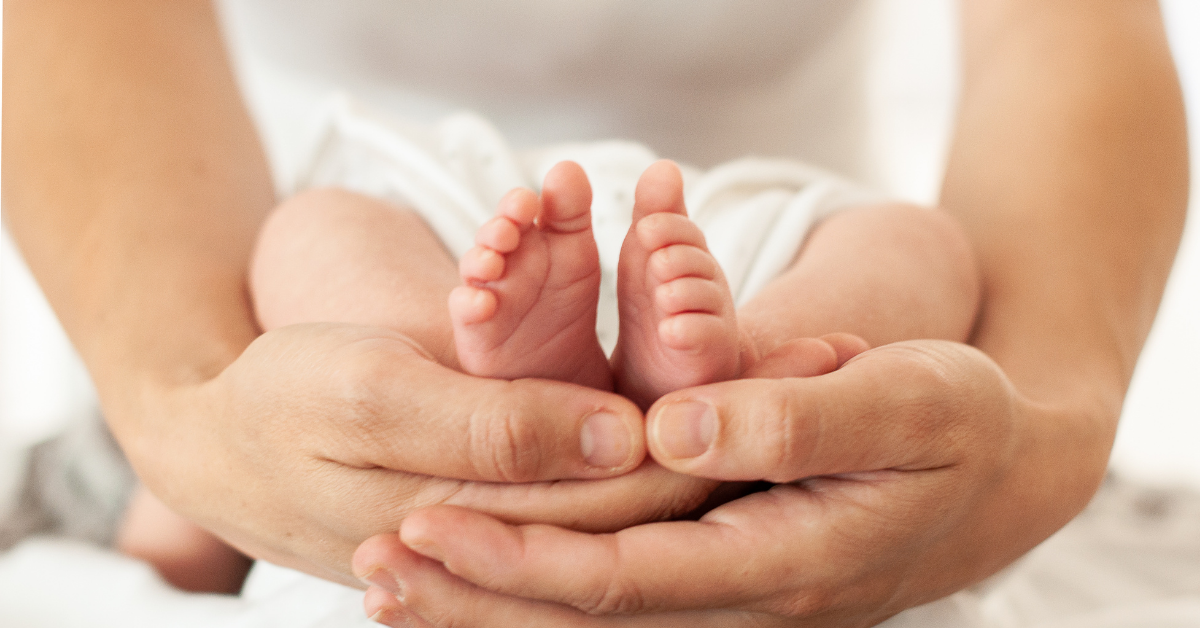Open Adoption: A Birthmother’s Story

I just celebrated my seventh anniversary as a birthmother. July 11th marked the day that my daughter was born and my life was forever changed. I was eighteen years old when I signed the adoption papers, terminating my parental rights and placing them in the hands of two people I had met just five months prior.
At the beginning of my senior year of high school, I thought I had everything figured out. I had a promising college scholarship in swimming, a boyfriend I loved, a homecoming queen crown – and then I found out I was pregnant.
Eventually, I arrived at my decision to make an open adoption plan. It was the hardest decision I’ve ever made. A great deal of thought, prayers, tears, counseling, and research went into my decision. Ultimately, I chose open adoption because I wanted my daughter to live in a stable, loving home with two people who were ready to be parents, and I also wanted her to be able to maintain a relationship with both her birth families.

Through my personal blog about open adoption, I’ve had the opportunity to meet and connect with many adoptive parents, adoptees, and birthmothers. What I’ve found is that almost everyone has the same question for me after reading my story: How is your open adoption so successful? Some have even told me, sounds too good to be true!
I’ll be the first to say that I have a great open adoption situation. I can honestly say that I LOVE the people who I chose to raise my daughter. They have embraced me and my family, as well as my daughter’s birthfather and his family. Seven years later, we still joke that we all adopted each other. But I don’t think that our situation is or has to be the exception. I’ve heard from many people who have told me that their open adoption situations are very similar – and that makes me so incredibly happy. On the other hand, I’ve also heard from birthmothers who have told me that their open adoption situations are less than ideal. It breaks my heart when I hear of open adoptions that just don’t work out.
I don’t claim to have the magic formula for a successful open adoption arrangement, but I do want to share some the things that have worked for us in hopes of enlightening those who might be able to benefit from the insights of an experienced birthmother.
One of my favorite books on this subject is Lifegivers: Framing the Birthparent Experience in Open Adoption, by James L. Gritter. When I read the book, I found myself saying “yes!” or “mmm-hmm!” or “finally!” after nearly every sentence. Gritter suggests that if we want to improve the public’s understanding and perception of birthparents, it is important for birthparents to share our experiences. He writes, “Healthy spokespersons of the present generation of birthparents are usually well received, but too often they are written off as exceptions because there are so few of them…. As more hearty souls muster the chutzpah to share their stories, however, we begin to replace debilitating stereotypes with bona fide people with whom the public can relate and identify.” And so I want to share my experience in the hopes of helping others to better understand the birthparent perspective. Our open adoption story is not “too good to be true” – rather, I feel it is too good not to share.

What is so unique about open adoption is that no two situations are exactly alike. There isn’t a one-size-fits-all solution. But there are some common factors that I believe can contribute to the overall success.
Set realistic expectations. Before the adoption takes place, it’s so hard to know exactly what to expect when entering into an open adoption agreement. Educating yourself is an important way to define your own individual expectations. Read about open adoption, seek professional counseling, and speak with lots of people, from all sides of the adoption triad, who have participated in open adoptions. Find out what has and hasn’t work for them. It’s important to try to define your expectations before the adoption takes place. If you are an expectant parent who is considering open adoption, how much contact do you desire one month, one year, 10 years, 20 years, etc. after the adoption? Write out your expectations, and share them with the prospective adoptive parents, and vice versa. If your expectations are drastically different, some further discussion is necessary to make sure that each party is getting what they desire from the open adoption arrangement. If it’s too difficult to come to an agreement about your hopes and expectations, you might need to consider a different placement for your child.
Keep your word. As a birthmother, nothing is more disappointing than hearing about adoptive parents who changed their minds about things that were agreed upon before the adoption. I’m not ignorant to the fact that there are special circumstances, specifically involving safety, under which the open adoption agreement must be altered or even broken. I know that every situation is different, and my intention isn’t to cast blame on anyone. The main point that I want to make here is that open adoption isn’t just about the relationship between birthparents and adoptive parents - more importantly, it is about the wellbeing of the adoptee. It’s about giving her the opportunity to ability to build and maintain a level of contact with her birth families and to experience the love they have for her. Following through on promises made from the beginning will strengthen the foundation of your open adoption.
Be willing to compromise. Although it’s important to keep your word on promises made, it’s also important to keep certain aspects of your agreement flexible so that you can find a fit that works best for all of you. If, for example, you have agreed to a certain number of visits per year, you should still remain open to slightly more or slightly fewer visits. You have to find out what works well for all involved, and you have to accept that compromise is an integral part of the open adoption relationship. Open adoption can be difficult at times, even uncomfortable. It’s important to remember why you chose open adoption in the first place – because you believed it was best for you and best for the child – and be prepared for good times and bad.

Know your role. I’m not my daughter’s parent. I’ve recognized this fact from day one, and I’m very careful not to cross that boundary. As a birthparent, it’s so important to recognize the role that you play in your child’s life. If you’re not sure what your role is, talk to the adoptive parents. For example, I view my relationship with my daughter similar to that of an aunt who is there to love, support, and mentor her. If you are able to visit often, be sensitive to the fact that you are not in control of the everyday happenings in your child’s life. Some people have a hard time with this, but this is the reality of the open adoption situation. Here’s one small example from my own life: When Deanna was about two years old, her hair grew in like a mullet – nearly bald on top, with long hair in the back. Her adoptive mom just wasn’t ready to cut her hair yet. As much as I thought her hair would look better trimmed, I knew that this wasn’t my decision to make, so I kept my opinion to myself. A few weeks later, Deanna got her first haircut and De mailed me a few precious locks of her hair. All along, I have recognized that I entrusted Deanna’s parents to raise her, and that meant giving them complete authority to make all decisions regarding her wellbeing. I respect the decisions they make, and I let them be who I asked them to be – Deanna’s parents.
Know when to speak up. While it’s important to not overstep boundaries, it’s also important to be honest and open in your communication. Maybe I’m a bit biased – I have a degree in Communications – and I know from experience that this is easier said than done, but if there is something bothering you, speak up! Don’t let something fester inside of you – say how you feel and talk about how to resolve the issue. How you say things can be just as important as what you say. Approach sensitive subjects with kindness, respect, and full disclosure. Visits are usually the main topic of concern for many birthmothers – we wonder, Am I going to be cut out of the picture? Adoptive parents should keep this in mind when debating whether or not to change your visitation agreement and ask for more space. The fear of being shut out plays into the mind of nearly every birthmom. Will there be a day when the adoptive parents just don’t want me around anymore? I believe that both adoptive parents and birthparents need to be reassured.
Be hospitable. I once heard that open adoption can be compared to the relationship between in-laws. Sometimes you get along and sometimes you don’t, but you try your best to love your in-laws. Why? Because you love your spouse. In the same way, birthparents and adoptive parents should strive to compromise because they share an incredible love for their child. In another adoption book written by James Gritter, Hospicious Adoption, Gritter says that hospitality creates a context in which remarkable things can happen. With regards to measuring the satisfaction of adoptive parents and birthparents with their arrangements, Gritter found that satisfaction isn’t necessarily based on the frequency of visits, but rather on the quality of those relationships. He reflects: “I confess that the contact between birth and adoptive families is less frequent than we expected. More eye-opening, though, is the quality of these relationships. Where shame once prevailed, we now see affirmation. These relationships are meaningful, enduring, and healthy….None of us anticipated in those early years that friendships would develop between birth grandmothers and adoptive grandmothers…The amount of contact between families may be less than we envisioned, but the breadth and depth of their interaction is greater than we ever imagined.”

This has been just a sampling of my own thoughts and experiences; I could go on and on listing things that have worked for us and things we have learned in our adoption relationship. Ultimately, though, our success comes down to the love we share for Deanna, the special and mutual respect we have for one another, and the quality and depth of the relationships we have worked very hard to build and maintain for the past seven years.
Amy Hutton is the birthmother of a daughter placed via open adoption. She has been featured in stories about open adoption in the Raleigh News & Observer and the Technician, NC State University’s newspaper. In 2011, Amy co-presented “How to De-Freakify Open Adoption” at an Open Adoption Symposium held at the University of Richmond School of Law, and her article “My Perspective on Open Adoption and Recommendations for Birthparents” was published in the November 2011 issue of NCFA’s Adoption Advocate. Amy blogs about open adoption at Amstel Life [http://amstel-life.blogspot.com]. She currently resides in Raleigh, where she works as a marketing director.



